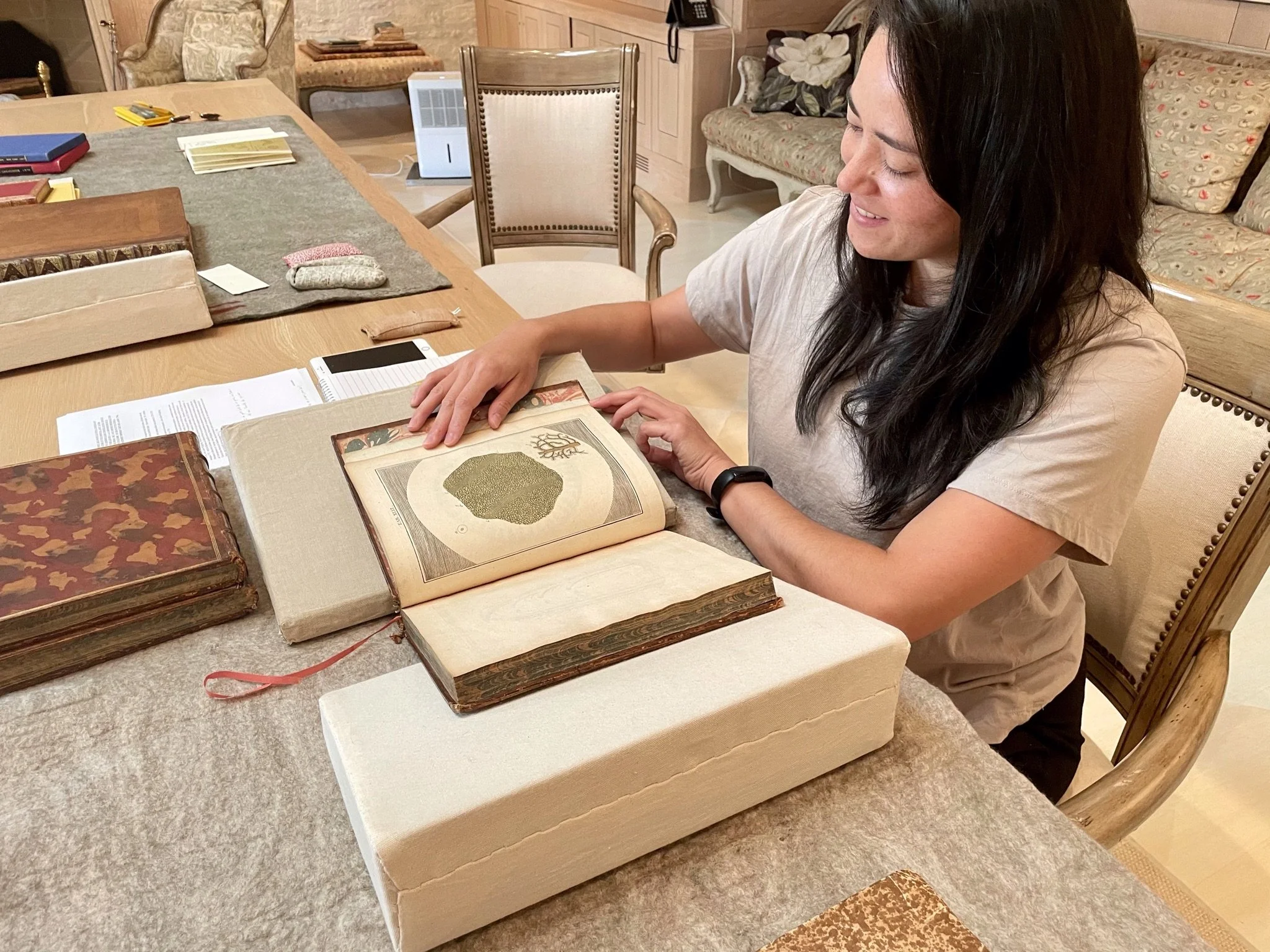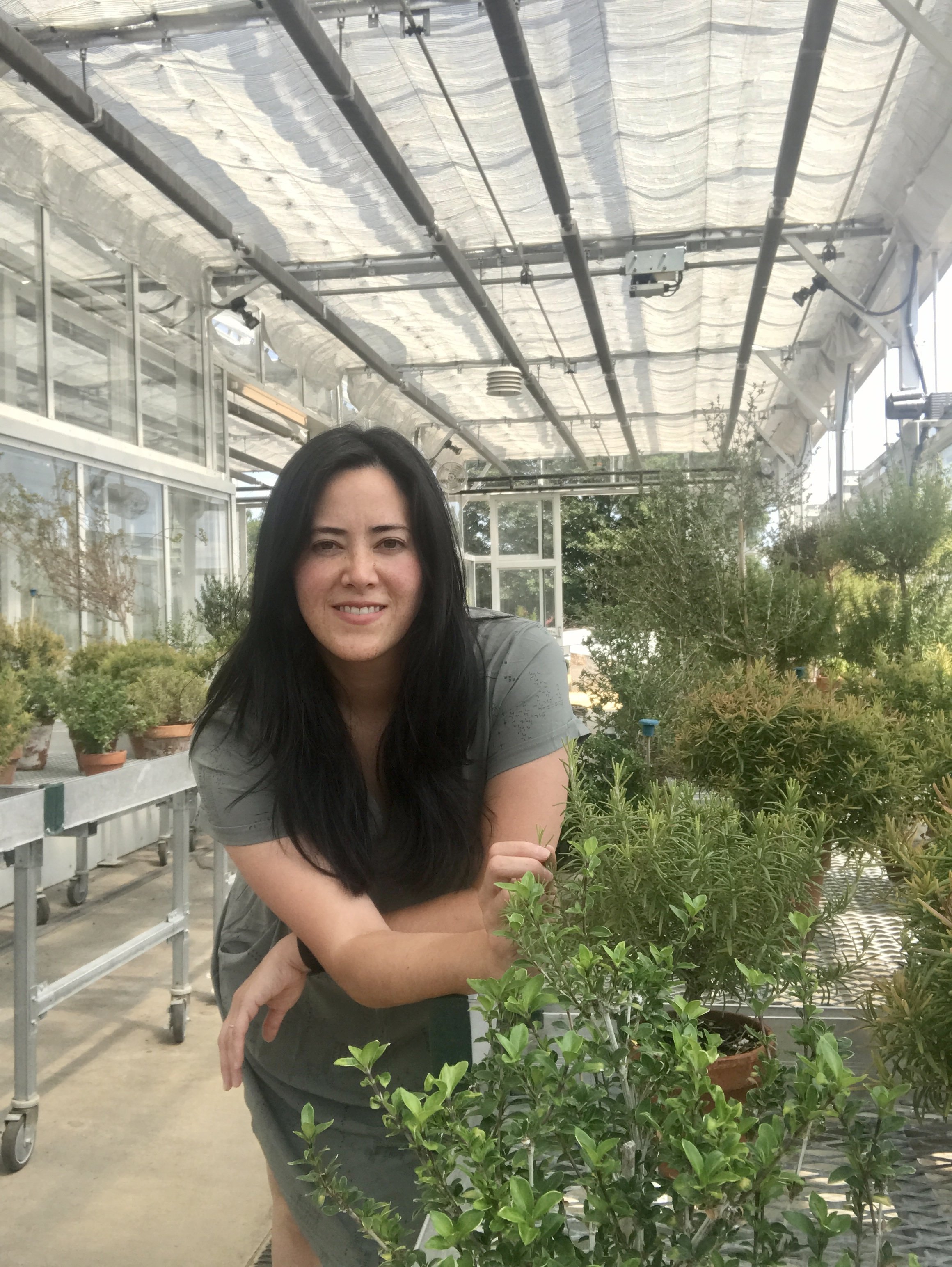Meet our Fellows: Aleca Borsuk and the Landscape of the Leaf
Emily Ellis
As winter sets in, our world becomes inundated with leaves: we rake up great piles of them, pull them out our gutters, absently crumble them in our hands when they tumble from down from bare branches. But have you ever thought about how leaves are structured on the inside?
Exploring the inner anatomy of something as common and every-day as a leaf is the last thing on most of our minds, but it’s at the core of scientist Aleca Borsuk’s work. Aleca, our inaugural 2021 Plant Science Research Fellow, is a Ph.D. candidate in Plant Ecophysiology (the study of the complex ways that plants interact with their environments) at Yale University. Her work aims to improve carbon assimilation models based on a new, spatially resolved understanding of leaf internal anatomy.
While Aleca was at Oak Spring this summer, we sat down with her to chat about the world within a leaf and what studying it might mean for the future of our planet –surrounded (naturally!) by the wide array of leaves in the beautiful formal garden.
“I'm characterizing, or describing, the microscopic architectures inside of the leaf, and figuring out what they do to help plants assimilate carbon or grow,” explained Aleca. “I'm coming at it from the angle of being at least part material science, and part engineering, which is my background, and part plant biology.”
Aleca, who holds a Bachelor’s of Science in Mechanical Engineering and a M.S. in Environmental Science, said she first fell in love with leaf morphology and microscopy through her college lab classes, where she would slice open tissue on slides and examine it through a microscope.
Aleca in the production greenhouse at Oak Spring. Photo courtesy of Aleca Borsuk.
Leaves, basically, produce food for plants by photosynthesis – a concept we likely all learned about in science class. But while we normally think of leaf attribute as color, size, and shape, there is incredible structure built within leaves that help them function and adapt in a wide range of environments, which researchers are only beginning to explore through 3-D microscopic tools, Aleca continued. “There's beauty and there's function there, and that's what really excites me.”
Studying that structure requires some serious technology. Aleca and the team she works with take high-resolution, high-intensity x-rays using a synchrotron light source to examine the minute insides of leaves. Computer visualization tools then help them reconstruct what the leaf looks like, and allow them to carry our traditional scientific studies such as assessing carbon assimilating capacity.
“The next phase of the work is to simulate light propagation in leaves, and simulate carbon dioxide and transport in a leaf,” she said. “And then you can vary or control the different aspects of the leaf's internal architecture to see what influence that has on photosynthetic performance.”
Aleca and her team have examined everything from ferns to common crops – including a spinach leaf picked up at the grocery store on a whim one day (this leaf, she said, was one of her favorites!) One thing they all have in common? They act as “kind of a bridge between the nonliving and the living world,” she said, transforming things like carbon dioxide, sunlight, and water and making it possible for our biosphere – and everything in it – to exist.
Geranium lucidum - some of Oak Spring’s many interesting leaves!
Understanding how leaves do this could not only help to mitigate or reverse climate change, but could lead to the development to a range of more sustainable systems and technologies.
“Once we know what kind of plant strategies there are for this process, how could we optimize these plant traits in order to promote plant productivity? Or, how could plant architectures inform biologically inspired technology?” said Aleca. “That's where I'd like to go with it eventually.”
While much of Aleca’s work takes place at her lab, we were thrilled to give her the space and time to carry out her research - and find inspiration in our site and our other resident scientists, researchers, and artists - over the summer.
"Highlights, or the most meaningful parts of the experience, were conversations that I had with the other fellows and residents," she said. "Not only was it inspiring to hear how plants and landscapes were important to them, but also for me to be able to take a step back from my work and think about how I can communicate my science to other scholars and folks with no background in it."
To keep up with Aleca’s research, visit https://campuspress.yale.edu/alecaborsuk.
Interested in applying for our Plant Science Research Fellowship or one of our other opportunities? We’ll open applications in the first quarter of 2022 - be sure to keep an eye on our social media pages and website for that and other announcements about our fellowship and residency programs.
Banner image by Connie Zheng



